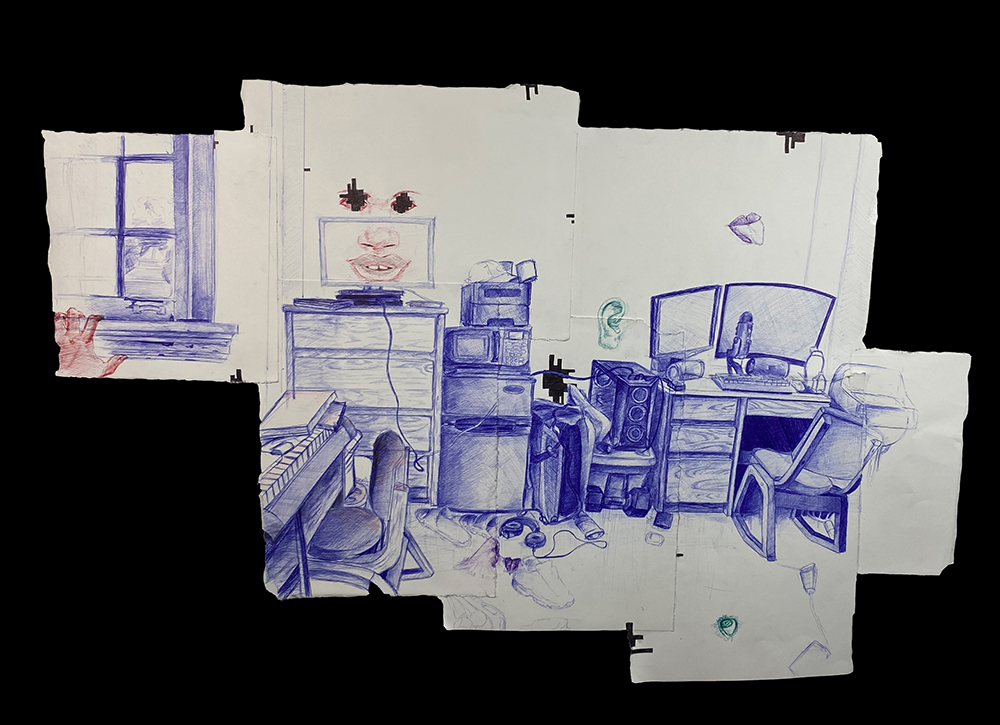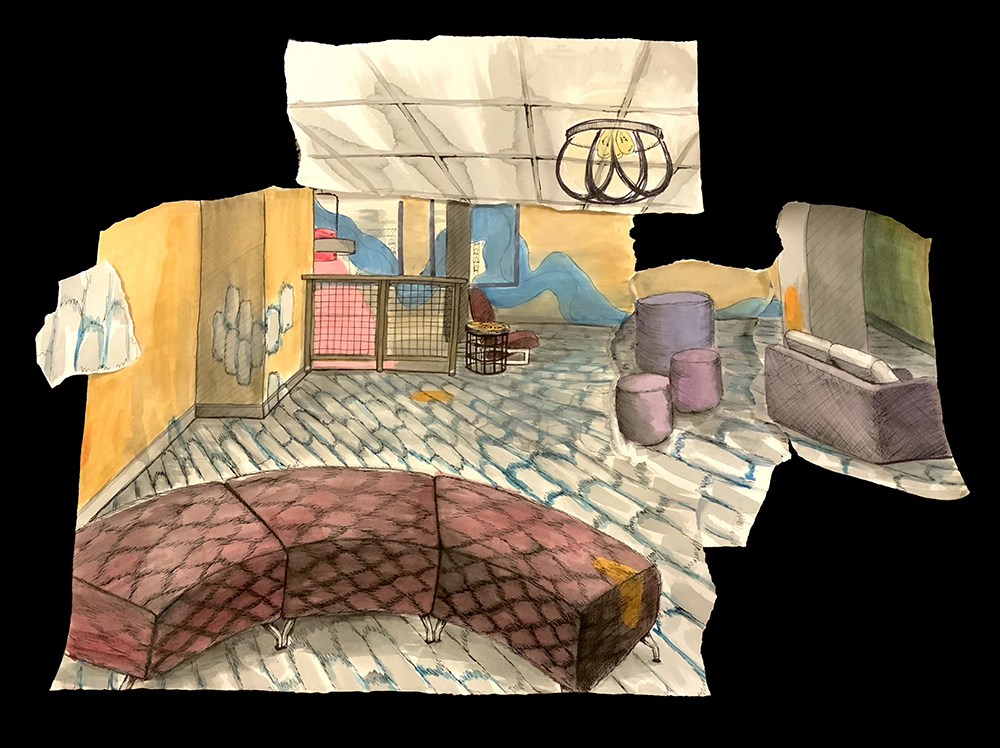Art 4343 | Drawing IV
Drawing IV is a continuation of ART 2233 to develop further skills for advanced students.
Below are descriptions of some of the assignments in the course with student work examples.
Assignment 1: Chair
- Using a chair as the main protagonist or character in your drawing, create an engaging composition that implies or suggests a narrative/story. Make sure you use a chair and not a stool or a lazy boy sofa.
- You may include other subject matter such as organic or inanimate objects, and/or figures as “supporting characters” in your drawing, and place them with the chair in the environment of your choice, for e.g., in an interior of a room, building, architectural structure, landscape, seascape, etc.
- Use a camera to photograph the chair in different perspectives and from various eye levels. You can use these photographs as your reference material for your drawing and/or you may draw the chair from direct observation.
- You may change the size of the chair or crop it slightly if needed but do not alter or distort its proportions. If necessary, you may duplicate the chair, but only once in your drawing. Use your imagination and any kind of pertinent reference material to help you create an interesting narrative that engages the viewer.
- Choose an appropriate but limited palette for this assignment. Your use of color should enhance the composition and overall aesthetics of your drawing.
- This is a mixed-‐media project so you are required to use more than one medium.
- Experimentation with different materials is STRONGLY encouraged. Your completed piece should function more as a drawing, and not a painting.
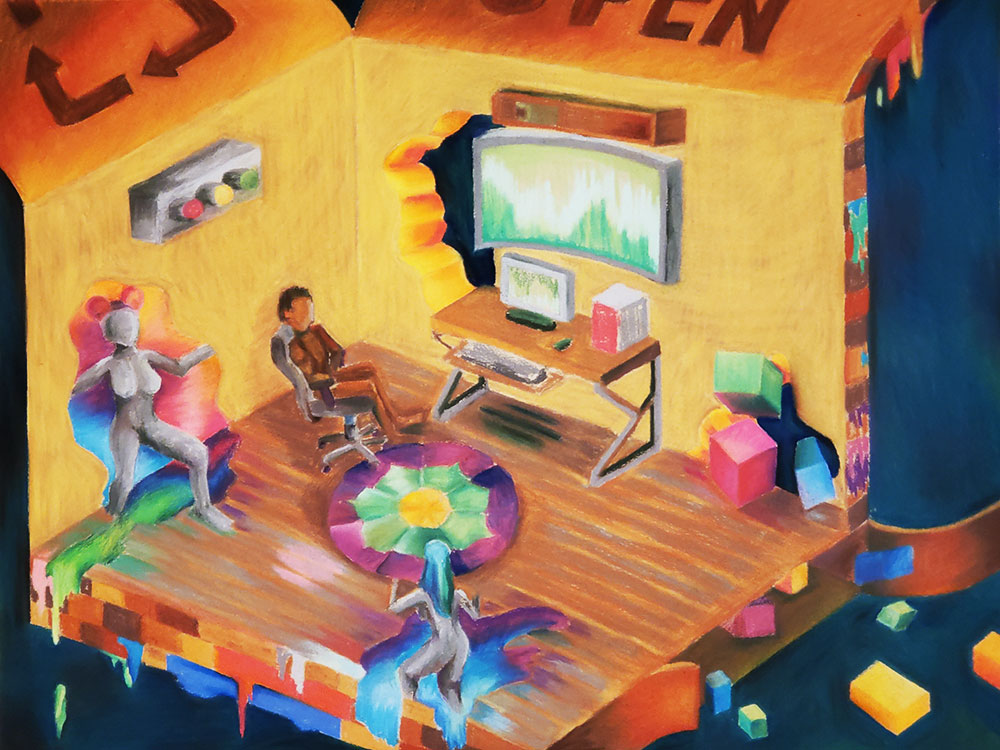
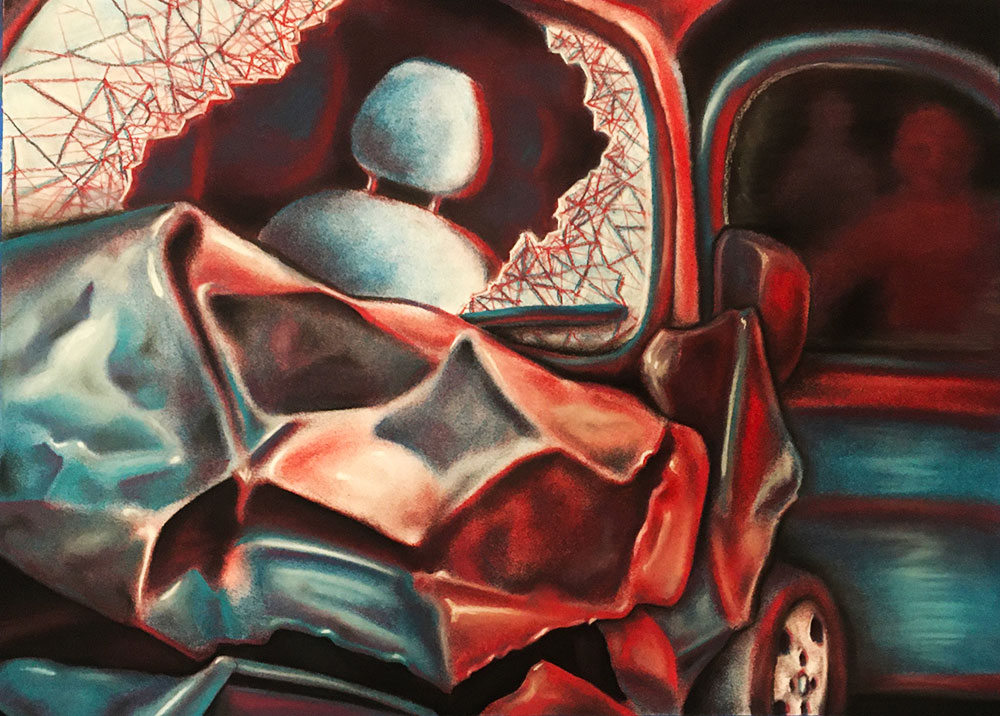
Assignment 2: Map
- Create a drawing using maps as an integral component of your composition. You can draw, Xerox transfer, or collage actual maps onto your drawing. The maps can be in the form of world maps, topographical maps, city maps, road maps, transit maps, blueprints, etc.
- You can also create your own version of a map. Your invented map can be based loosely on actual maps or can be created entirely from your imagination and does NOT have to resemble a traditional or stereotypical map.
- With the map as an active element, create a drawing that has either a historical, scientific, social/cultural, anthropological, or political content. The drawing can be based on actual events, studies, experiments, or make-‐believe situations. Your composition must be well designed and anything that you include such as still-‐life objects, figures, etc., should help express your concept/idea effectively.
- You are encouraged to use more than one medium and to experiment with as many different materials as you wish. Limit your palette to colors that are appropriate for the mood that you want to evoke in your drawing. Your completed drawing can be either two-‐dimensional or three-‐dimensional/low-‐relief,or both.
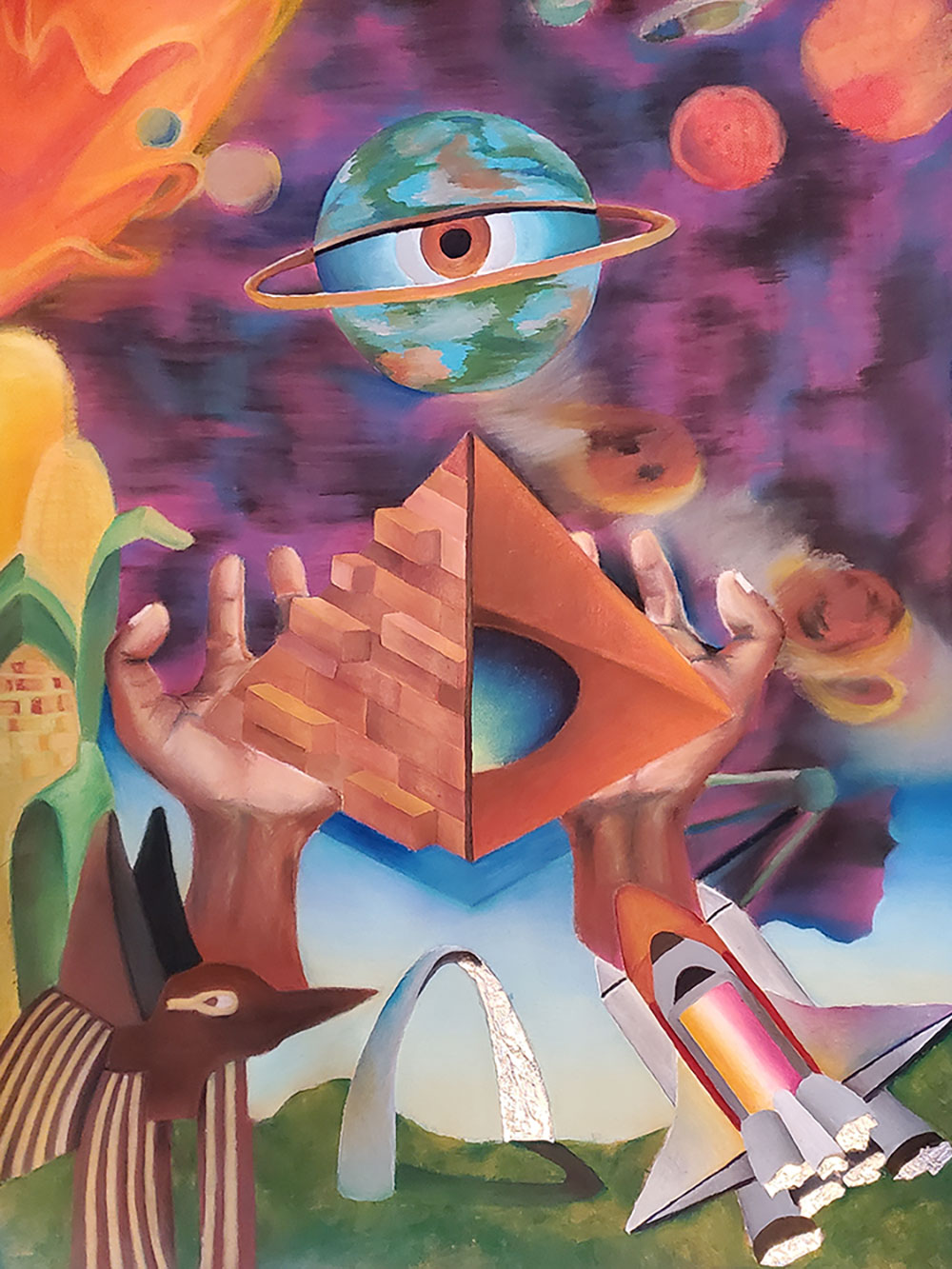
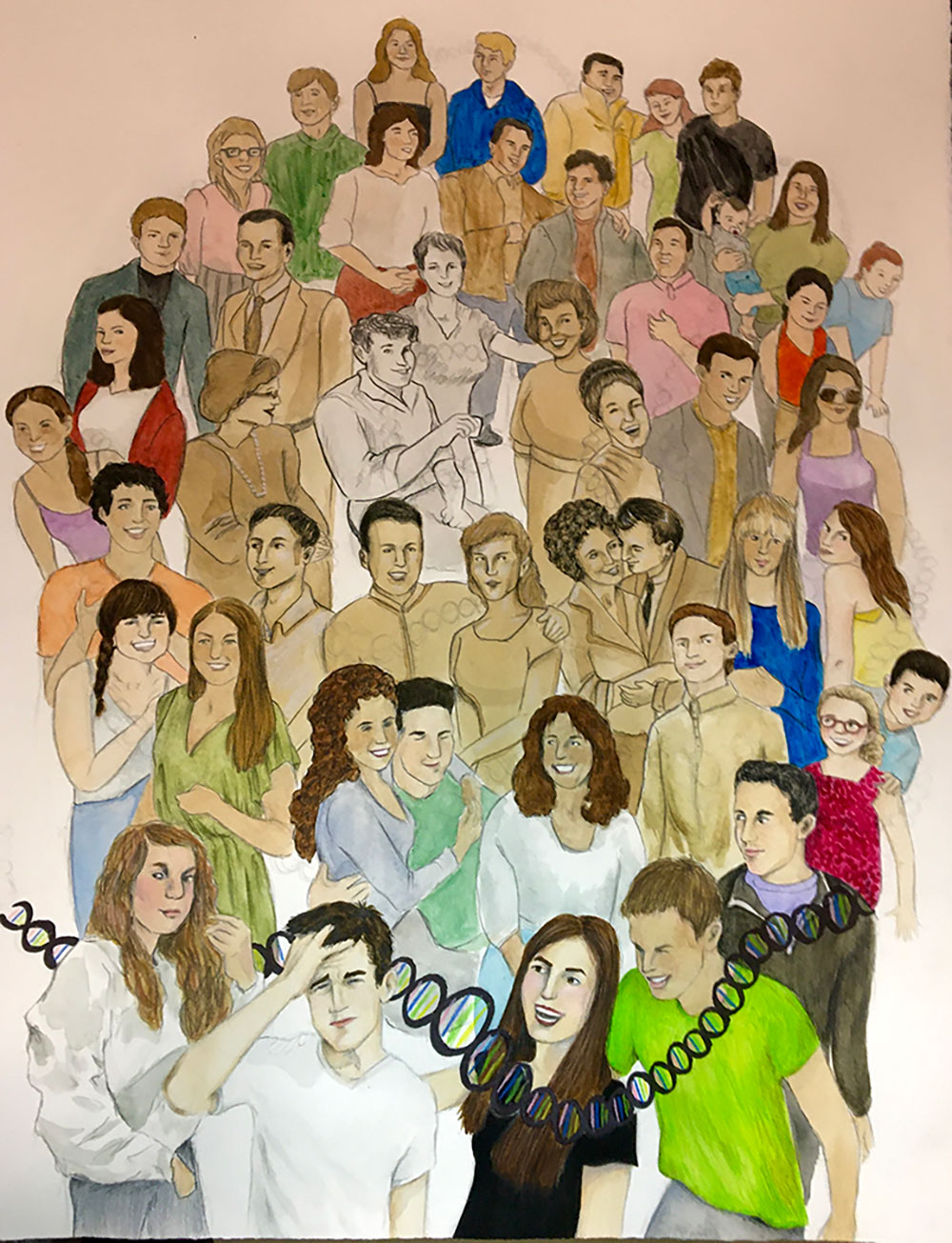
Assignment 3: Time Travel
- You have invented a time travel machine that is able to travel through time and space. It is able to transport you to the future and to the past, as well as to anywhere in the universe. One day during one of your travels, the machine malfunctions! (Insert dramatic music here.) You have arrived at an unknown destination! (Highly dramatic music.)
- Describe the scene that awaits you as you step out of the machine. The scene has to be some kind of “scape”, i.e., a landscape, seascape, skyscape, cityscape, or the interior of a structure such as a building, vessel, organic entity, etc. The “scape” can include foreign-looking elements or familiar forms that are inanimate and/or organic.
- Create a drawing that is fascinating and wildly imaginative. Your composition should be engaging to your viewers. For your reference material, you may draw from your own photographs or from other source materials, including images from the Internet, books, and stock photographs. Do not copy the images exactly if you are using materials that are not your own.
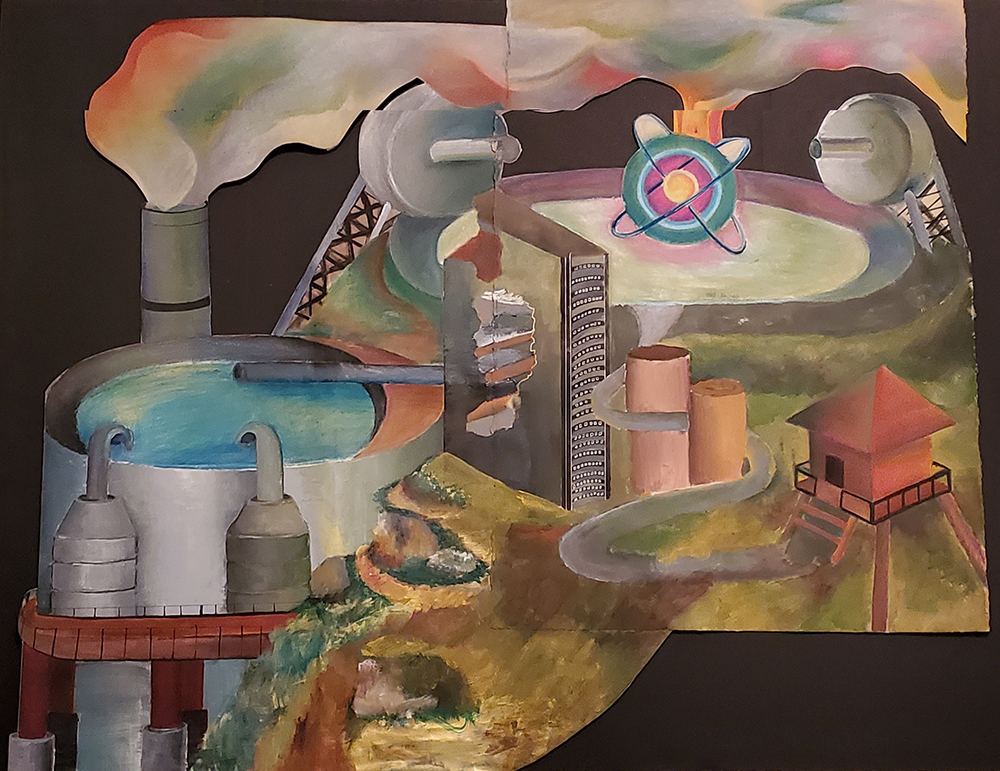
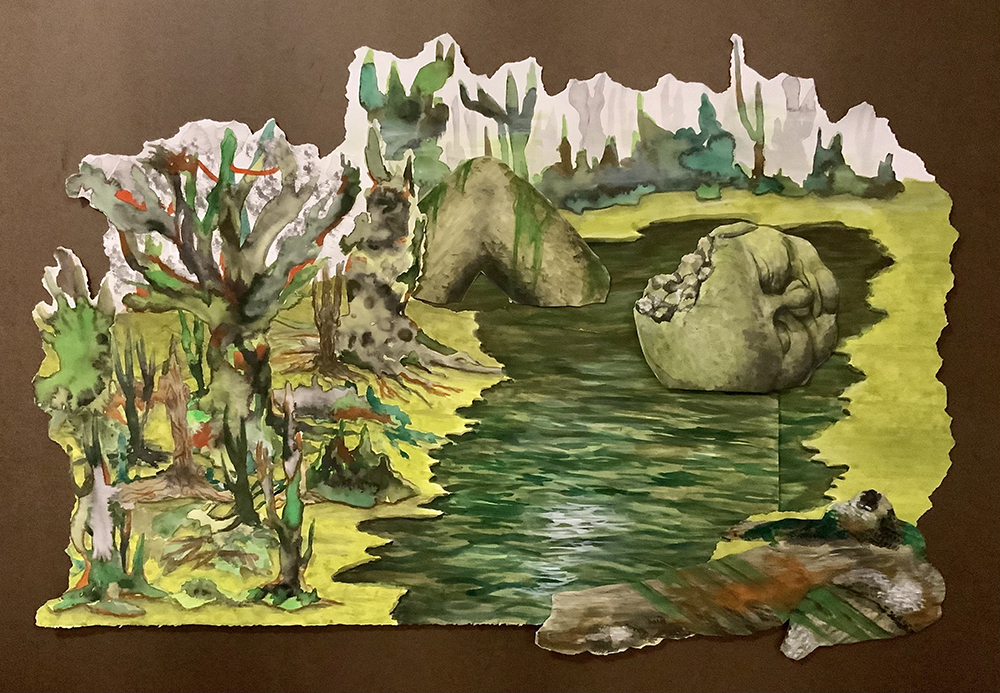
Assignment 4: Uneven Formal Interior
